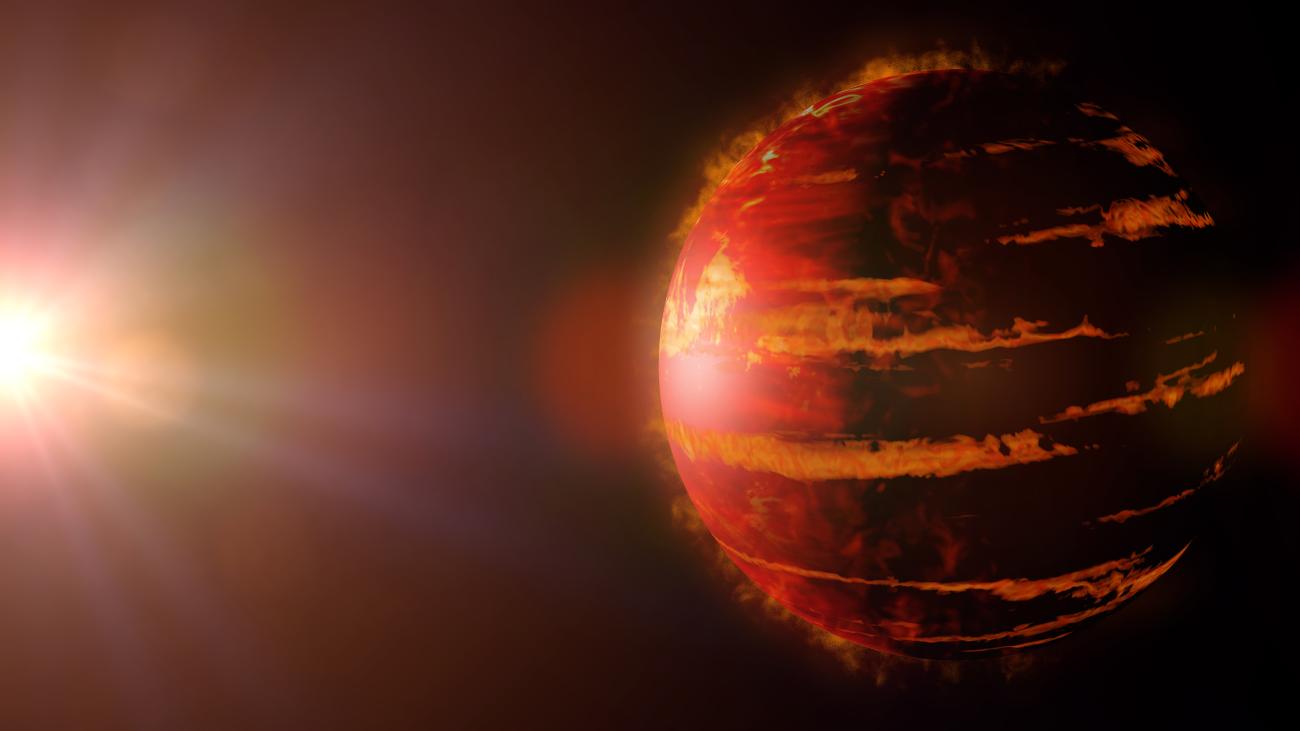Researchers have found an extremely hot gas giant that has a surface temperature 2,000 degrees higher than that of the Sun. It orbits a white dwarf and intense ultraviolet radiation strongly affects its atmosphere.

New “hot Jupiter”
Astronomers who work with telescopes at the Southern European Observatory in Chile have reported the discovery of a record-breaking “hot Jupiter“. These celestial bodies are similar in size and composition to the largest planet in the Solar System, but they are only a few million kilometers away from their stars. Therefore, scientists have not been surprised by the high temperatures of their atmospheres for a long time.
However, in a new article published in Nature Astronomy, scientists have described a really interesting case. We are talking about a system that is located at a distance of 1400 light-years from us and contains two known planets. The nearest of them is so large that it can be attributed not even to “hot Jupiters”, but to brown dwarfs — a class of objects occupying an intermediate position between gas giants and low-mass stars.
At the same time, an discovered planet is gravitationally locked. That is, the tidal forces of the star have slowed down its rotation around its axis so much that it takes the same time as the orbit around the star. As a result, “Jupiter” is always turned to its star by the same side.
The temperature on its “night” side reaches 1000-3000 K. This is commensurate with the temperature of the photosphere of some red dwarf. However, on the “day” side of the planet, it is much higher and ranges from 7250 to 9800 K. This means that the temperature difference between the two hemispheres is 6000 K.
How a white dwarf heats up its planet
But the most interesting thing about the newly discovered planet is that the temperature on its “daytime” side turns out to be a record for such a class of objects. It is 2000 K higher than the one that scientists observe on the Sun. And they see the reason for such an extreme phenomenon in the fact that the star orbiting the planet is a white dwarf.
These compact remnants of stars have many times less luminosity than the Sun. However, this is caused only by their tiny size, and they are extremely hot. White dwarfs emit a large amount of high-energy ultraviolet radiation, which strongly affects the atmosphere of the planet, which orbits almost closely to the star.
According to the authors of the study, the system has moved to its current state relatively recently by cosmic standards. The red giant shed its upper layers and turned into a white dwarf only a million years ago and only began to intensively evaporate its atmosphere, the result of which we see as an unprecedented high temperature.
The study of the new system is extremely important for scientists. After all, the high heating of the atmosphere of “hot Jupiter” means that it quickly evaporates. As a result, its mass decreases and its orbit changes. Therefore, its research will help scientists better understand how exoplanets evolve.
According to phys.org
Follow us on Twitter to get the most interesting space news in time
https://twitter.com/ust_magazine

